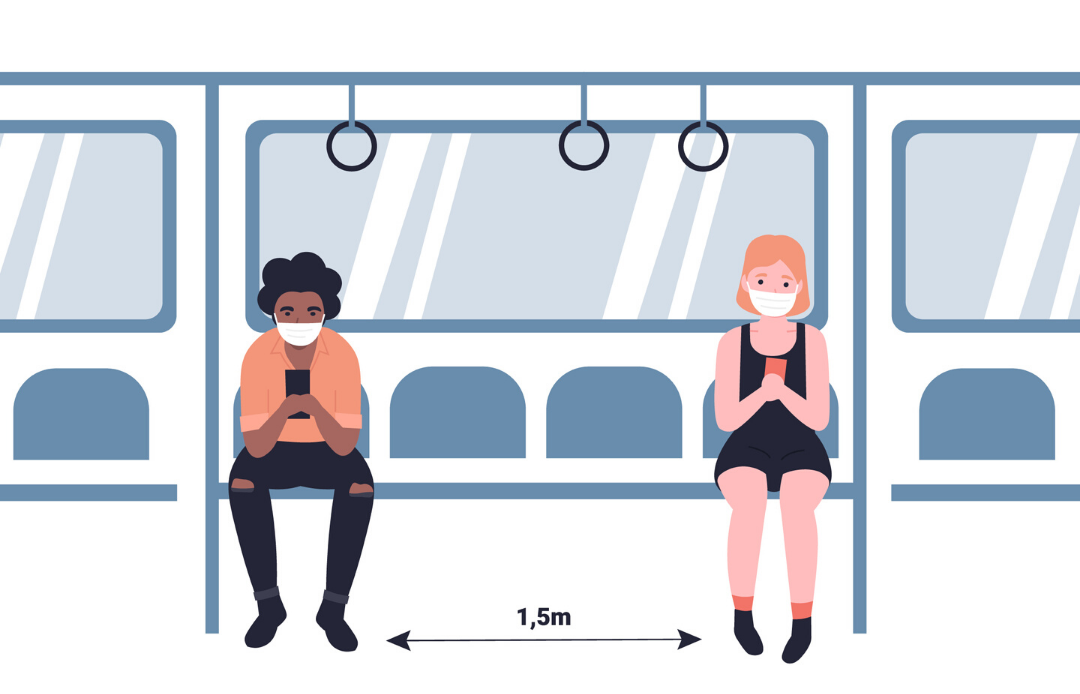
Public transit as a critical element of our daily commute has always been the backbone of urban mobility. The COVID-19 crisis has had an adverse impact on public transit, however. Ridership in major cities in the U.S., Europe and China is down by 50-90% from pre-crisis levels. Although public transit agencies are now eligible to receive $25B in emergency funding under CARES Act, American Public Transit Association (APSA) forecasts a reduction in farebox revenue of 75% over the next 6 months.
More specifically, according to a survey by the California Transit Association, BART saw more than a 94% reduction in ridership and $8.9 million in losses recently. CalTrain ridership is down 95%, costing $2 million in revenues per week, while Sacramento Regional Transit is down 80% and has lost more than $3 million over the same time period.
The recovery will be slower for public transit as travelers will keep exercising social distancing in post-COVID-19 cities, and they will be afraid of higher occupancy modes. Jeffrey Tumlin, the Director of the San Francisco Municipal Transit Agency (SFMTA), states that “this is a once in a lifetime opportunity to question all of the historic and political decisions that created the transit system in the form that it was when we inherited it”.
Public transit normally faces connectivity and fills the availability gaps. Considering the current challenges, public transit does not fulfill its potential. Thus, microtransit appears to be a great option to meet that need in this crisis. Microtransit is a form of demand-responsive transport and it offers flexible routing and/or flexible scheduling. Microtransit companies have taken great initiatives and built remarkable partnerships with the cities in the midst of this crisis. For instance, Via partnered with Ben Franklin Transit in Washington State to launch an on-demand transit service in West Pasco and this service was actually going to be launched in early April as a first-and-last-mile service, but it is now supporting residents and essential workers and helping them with essential travel needs during the COVID-19 crisis. Los Angeles County Metropolitan Transportation Authority has also expanded its three existing zones to include medical centers, grocery stores and pharmacies due to the COVID-19 crisis. In one week, the service started to provide trips anywhere within the zone (not just to its original first-and-last mile pickup and drop-off points at train stations). It accommodated social distancing measures by offering exclusively private rides, providing riders with a safe mobility option for essential needs.
Cool, on-demand public transportation service in Malta also expanded its service to the entire island, and adjusted service to provide riders with private rides to properly account for social distancing. More importantly, Cool now works closely with grocery stores and small businesses to deliver goods through the app, pooling multiple deliveries into the same vehicle to increase efficiencies. Similarly, Go-Coach in Kent, United Kingdom has adjusted the original service zone and included four nearby hospitals and temporarily replaced a fixed-route bus system with on-demand service that both reduced costs and serviced essential rides. The Berliner Verkehrsbetriebe (BVG) has rapidly made changes to its on-demand public transportation network BerlKönig in order to focus its service on essential employees and to minimize person-to-person contact. The zone was then expanded to include access to 75% of all hospital beds in Berlin and they provided free transportation to essential healthcare workers. It also altered the hours of operation to better align with medical shifts and capped all vehicles at 50% capacity.
During the COVID-19 crisis, microtransit companies have successfully extended access to affordable, efficient, and convenient transit and they have rapidly transformed their services to support residents and essential health workers.
It is clear that public transit will not be the same after this pandemic is eventually over. Therefore, public transit agencies and the private sector should work hand in hand and collaborate more efficiently to create the future that we desire. Providing safe and efficient mobility is of the utmost importance especially when it comes to the essential workers who are trying to reach jobs and to have access to food, medicine, and other critical goods and services. It seems that this crisis may bring the unthinkable along: rebooting public transit, therefore, we should buckle up for the public transit renaissance in the post-COVID-19 crisis.
About the author
Sebnem Tugce Pala is currently working for a hi-tech startup AmpUp’s public policy team in the San Francisco Bay Area. AmpUp builds peer to peer networks for electric vehicles and charging technology solutions for business and hosts of all sizes. In the meantime, she is working as a policy researcher for Transportation Sustainability Research Center (TSRC) at UC Berkeley. Her previous work experience includes the European Union’s non-profit lending institution (European Investment Bank) in Luxembourg, a rural development case study in Kenya at the International Labor Organization in Switzerland, grant writing and grant prospect research consultancy for Good Cause Group in Stanford, and an internship with top 100 artificial intelligence startup Iris Automation’s public policy and regulatory affairs team in San Francisco. Also, she worked for the policy initiatives team of Spin Electric Scooters (Ford Mobility) in San Francisco. Sebnem hopes to apply her public policy experience to the field of sustainable transportation. Her interests include transportation electrification, micromobility, microtransit, shared mobility, autonomous vehicles, unmanned aircraft systems, and urban air mobility.
She can be reached at: https://www.linkedin.com/in/sebnemtugcepala/

